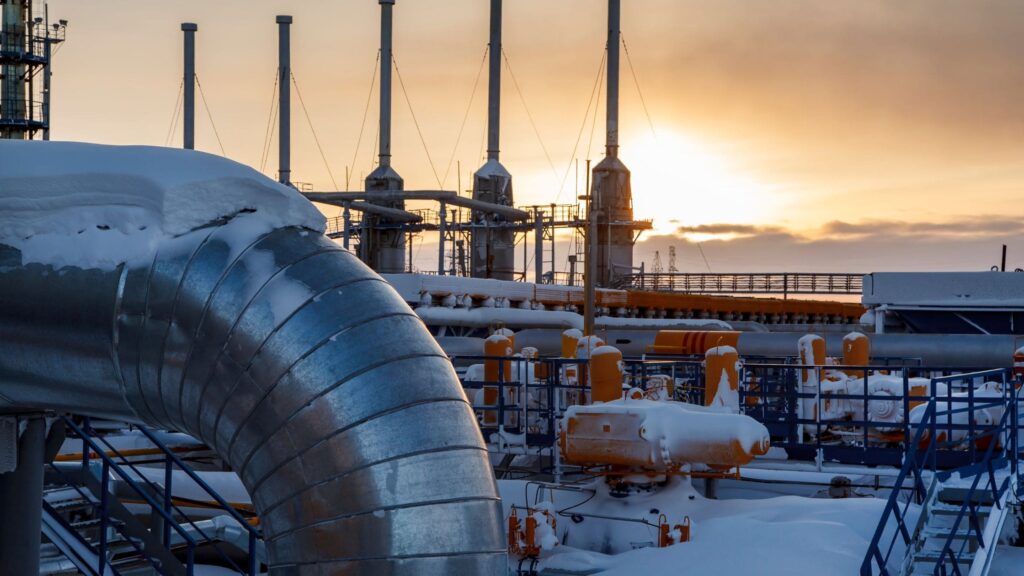Before any oil and gas can be sold, it must be tested and measured to ensure it is suitable for the market. Measurements also have to be taken to verify the volumes being sold.
How Does an Oil and Gas Company Measure Its Production?

The typical measurement for petroleum and LPG products in the United States and other Western Hemisphere countries is gallons. In Canada, Europe, and other Eastern Hemisphere countries, measurements are taken in metric tonnes or kiloliters. The density of the product determines its conversion from volume to weight.
Oil and Gas Industry Measurement in the Field
The law requires that any natural gas (hydrocarbons) or crude oil production is measured before it leaves the site of the well. There is an oil and gas industry-standard that the Operator uses to confirm measurements. It will either be a check meter for gas or a re-checking of oil levels in the oil storage tanks.
What is the Standard Measurement of Crude Oil?
Crude Oil Measurement
Crude oil is the term used for oil that has been obtained from an oil well. It is an unrefined mix of hydrocarbon fluid, hence the term “crude oil.” This liquid is likely to contain water and numerous other impurities in its raw form. This liquid is primarily sold as a commodity.
Crude oil is measured in one of three ways:
- BBL (42-gallon barrel): You’ll often see this unit of measurement specified on a royalty statement.
- SI: Oil volumes are measured in metric tonnes in countries that use the metric or SI system.
- Metric tonnes (mt): This measurement is generally used in Europe and the former Soviet Union. One metric tonne equals 2,204 pounds.
When the amount of crude oil to be measured is between 1 and 100 BOPD, the volume of a stock tank is measured before and after the oil tank has been emptied. Measurements are taken using a weighted measuring strap that’s lowered into the oil storage tank.
For larger volumes of crude oil (between 100 and 1000 BOPD, measurements are taken automatically using a system called LACT (Lease Automatic Custody Transfer).
What are the Factors Impacting Crude Oil Measurement?
Several factors can affect the quality and also the quantity of crude oil. These include temperature, API gravity, and whether water and base sediment are present.
Temperature
Oil stored in a stock tank tends to be the same temperature or close to the surrounding air. However, the temperature can change when the oil is recently produced or it’s been heated in a heater-treater. When oil heats up, it expands much like other fluids. Compensations for any change in temperature in the stock tank are made by adjusting to a standard temperature of 60 degrees Fahrenheit.
Density
Density is also known as API Gravity. The American Petroleum Institute developed this measurement index. It describes how heavy or light the oil is in relation to water. API Gravity is measured in degrees.
Water has an API gravity of 10 degrees. Oil with more than 10 degrees API gravity is “light” and will float on water. Oil with an API of less than 10 degrees is “heavy” and will sink in water.
API gravity determines the value of the oil. Light oil is more suited for high yields of diesel or gasoline after it’s been refined. A rule of thumb to remember is the higher the API, the better the crude oil’s quality.
How Oil is Measured?
- LACT Unit: This measurement is taken when the product is transferred. These units take an accurate crude oil measurement automatically in midstream, typically between a stock tank and feed line. The unit determines the oil’s temperature, API gravity, and BS&W content.
- BS&W: BS&W is an abbreviation of basic sediment and water. These impurities often remain in the oil, even after treatment. They are not marketable and must be carefully measured, removed, and factored into the value of the crude oil if they’re still present.
What is the Standard Measurement of Gas?
A gas measurement can be made in several ways.
- Standard Cubic Feet (SCF): This is the most commonly used natural gas measurement. A cubic foot of natural gas equates to the amount of gas in a cube one foot on a side. The gas must be at a standard temperature and pressure.
- MCF: This unit of measurement for the volume of gas is the same as one thousand cubic feet.
- MMBTU (British Thermal Unit): Another related natural gas measurement is the British Thermal Unit, or MMBTU. It is a measurement that’s based on the energy or heating value of natural gas.
LNG (Liquefied Natural Gas)
Liquefied natural gas is commonly measured in cubic meters or metric tonnes. The standard conversion to volume units is 1ml = 2.12 m3 or 79.5 ft3.
LPG can also be measured in gallons in the United States and some other Western Hemisphere countries. In Canada, Europe, and other Eastern Hemisphere countries, you’ll find it measured in metric tonnes or kiloliters.
How to Measure Natural Gas Production?
Natural gas is measured in a slightly different way than oil. The measuring process is called gas metering. Measurements are taken as the natural gas flows past a specific point. The measuring equipment used to measure the total gas flow will be either an orifice meter or a turbine meter.
Typically, natural gas is measured by volume at surface conditions. The measurement unit gas companies use is thermal energy units.
What is the Established Industry Standard Referring to all Gas Volumes?
There are some well-established industry standards for measuring gas volumes. They include the following:
- Standard Cubic Foot (SCF): This standard is commonly used in the U SA, Latin America, Africa, and the Middle East. Standard conditions are 14.696 psi (1 atmosphere) and 60°F.
- Standard Cubic Meter (Sm3): This standard is commonly used in Canada, Russia, and Europe. Standard conditions are 100 kPa (0.987 atmosphere) and 15°C.
What are the Factors Impacting Gas Measurement?
Several factors can affect gas measurements, including temperature and pressure.
Temperature
Industry-standard gas measurement conditions are 60 degrees Fahrenheit (ambient temperature). When the temperature is high, less gas will be contained in one cubic foot of space.
Pressure
Industry-standard pressure is 14.7 pounds per square inch absolute (PSIA). When the pressure is higher, it’s possible for more gas to be contained in one cubic foot of space.
Oil and Gas Measurement Regulations
Gas and oil measurement regulations are critical for many reasons. For example, the help to maintain fairness in the marketplace and ensure compliance with all provincial regulations and requirements. In addition, they help produce better quality products and services.
All over the world, provinces have developed their own systems of weight and measurement. In addition, a variety of laws will be passed to ensure fairness and to preserve a country’s success economically.
Oil and gas measurement and regulation is vital and compliance with those rules along with ensuring measuring equipment and instruments function correctly ensures operators produce the best quality oil and gas products.
Commonly Used Oil and Gas Metering Technology
Understanding the different terminology helps operators comply. Here are some commonly used terms:
- LACT: This stands for Lease Automated Custody Transfer. These units test and measure oil and can be found at a well site before the oil enters a storage facility or along the pipeline.
- Metering Skids: This is an automated measuring system used for measuring oil or natural gas. They comprise several measuring instruments on a steel frame. They are typically used during custody transfer for determining financial estimates.
- Coriolis Flowmeters: This is a special type of flow meter. It is used to measure a mass of fluid based on inertia.
- Orifice Meters: An orifice meter is used for measuring gas. When the gas passes through the meter, the pressure drops. This differential pressure drop can be measured.
- Turbine Meters: This special type of meter determines the volume of liquid that flows through them. It does this by repeatedly trapping a quantity of the fluid and then releasing it.
Why Oil and Gas Measurements Are Important?
Accurate measuring and standardization are crucial for maintaining good quality oil and gas production. Regulations are in place to ensure the industry is fair and operators receive the right price for their products.
FAQs
1. What is the unit of gas measurement?
Gas is measured in cubic feet at a temperature of 60 degrees Fahrenheit and an atmospheric pressure of 14.7 pounds per square inch.
2. How is oil price measured?
Oil prices are determined by global supply and demand.
3. Is oil measured by weight or volume?
Oil can be measured either way. In the US, oil tends to be measured by volume (barrels). While in Europe and Canada, it is usually measured by weight (tonnes).








